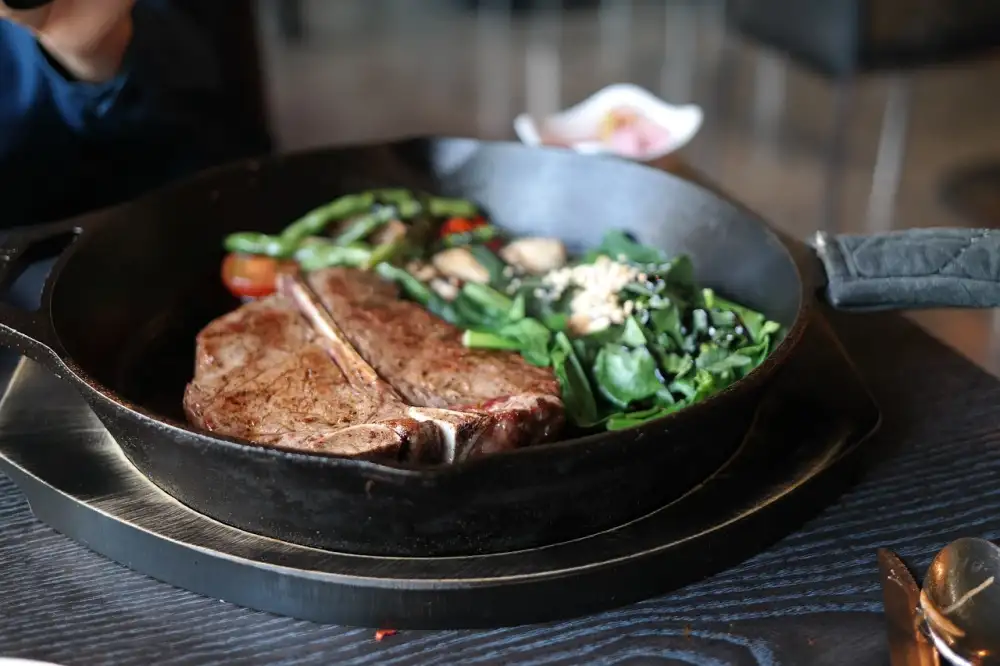Revive Your Cast Iron Skillet: Master the Art of Cleaning for a Spotless Home

A cast iron skillet is a prized possession in any kitchen. Its ability to distribute heat evenly and retain it for longer periods makes it ideal for cooking a wide range of dishes. However, to ensure its longevity and optimal performance, proper cleaning is essential. Neglecting to clean your cast iron skillet can lead to the buildup of food residue, rust, and an unpleasant taste in your meals. In this article, we will guide you through the art of cleaning your cast iron skillet, so you can revive its beauty and enjoy flawless cooking every time.
Gather the Necessary Supplies
To successfully clean and maintain your cast iron skillet, you will need a few essential supplies. These items are readily available and will make the cleaning process much easier. Here's what you'll need:
1. Coarse salt: Opt for kosher salt or sea salt, as they work best for scrubbing away food residue without damaging the skillet's surface.
2. Soft sponge or brush: Choose a non-abrasive sponge or brush that won't scratch the skillet. Avoid using steel wool or harsh scouring pads.
3. Hot water: You'll need hot water to rinse off the salt and any remaining debris from the skillet.
4. Paper towels or clean cloth: Use these to dry the skillet thoroughly after rinsing.
5. Cooking oil or shortening: For seasoning the skillet after cleaning, you can use vegetable oil, canola oil, flaxseed oil, or even animal fat like lard or bacon grease.
By gathering these supplies beforehand, you'll be well-prepared to tackle the cleaning process and restore your cast iron skillet to its former glory.
Step 1: Scrubbing the Skillet with Salt
To begin the cleaning process, you will need a coarse salt, such as kosher or sea salt. Sprinkle a generous amount of salt onto the surface of the skillet. The abrasive texture of the salt will help to remove any food residue or stuck-on grime.
Using a clean cloth or paper towel, start scrubbing the skillet in circular motions. Apply gentle pressure and make sure to cover all areas, including the sides and bottom. The salt will act as a natural scrubber, breaking down stubborn particles without damaging the seasoned coating.
Continue scrubbing until you are satisfied that all debris has been loosened and removed from the skillet's surface. This step may take a few minutes depending on how dirty your skillet is.
Once you have thoroughly scrubbed the skillet with salt, rinse it under warm water to wash away any remaining residue. Make sure to use only water for this step, as soap can strip away the seasoning on your cast iron skillet.
Now that your skillet is free from dirt and grime, it's time to move on to step 2: rinsing and drying the skillet.
Step 2: Rinsing and Drying the Skillet
After scrubbing the skillet with salt, it's time to rinse off any remaining residue. Hold the skillet under warm running water and use your hands or a soft sponge to remove all traces of salt and food particles. Make sure to thoroughly rinse both the inside and outside of the skillet.
Once rinsed, it's important to dry the skillet completely to prevent any moisture from causing rust. Use a clean towel or paper towels to pat dry the skillet, making sure to remove all excess water. You can also place the skillet on a low heat burner for a few minutes to evaporate any remaining moisture.
Remember, never air dry your cast iron skillet as this can lead to rust formation. The key is to ensure it is completely dry before moving on to the next step of seasoning.
By following these steps, you'll be well on your way to reviving your cast iron skillet and restoring its natural beauty.
Step 3: Seasoning the Skillet
Once you have thoroughly cleaned and dried your cast iron skillet, it is important to season it to maintain its non-stick surface and prevent rusting. Seasoning involves applying a thin layer of oil to the skillet and heating it to create a protective barrier.
To season your skillet, start by applying a small amount of cooking oil or solid shortening to a paper towel or cloth. Rub the oil all over the inside and outside of the skillet, making sure to cover every surface. Be sure not to apply too much oil as this can lead to a sticky residue.
Next, preheat your oven to 350°F (175°C). Place the oiled skillet upside down on the top rack of the oven with a sheet of aluminum foil on the bottom rack to catch any drips. Bake for one hour.
After an hour, turn off the oven but leave the skillet inside until it has cooled completely. This allows the oil to penetrate into the pores of the cast iron, creating a smooth and slick surface.
Repeat this seasoning process regularly, especially after cleaning your skillet with soap and water. The more you season your cast iron skillet, the better its non-stick properties will become.
Remember, never use harsh detergents or scrub brushes on your seasoned cast iron skillet as they can strip away the protective layer. Instead, simply rinse with hot water and use a stiff brush or sponge if needed.
By following these steps and maintaining regular seasoning, you can enjoy cooking with a well-maintained cast iron skillet that will last for generations. Happy cooking!
Additional Tips for Maintaining a Clean Cast Iron Skillet
1. Avoid using soap: Soap can strip away the skillet's seasoning and affect its non-stick properties. Instead, rely on salt or a gentle scrubbing brush to remove any stubborn residue.
2. Dry thoroughly: After washing, make sure to dry your skillet completely to prevent rusting. Use a clean towel or place it on low heat on the stove for a few minutes until all moisture evaporates.
3. Store properly: To prevent moisture buildup, store your cast iron skillet in a dry place with good ventilation. If stacking with other cookware, place a paper towel between each piece to avoid scratching.
4. Re-season as needed: Over time, the seasoning on your skillet may wear off. To restore it, simply apply a thin layer of oil and bake it in the oven at 350°F (175°C) for an hour. This will help maintain its non-stick surface.
5. Avoid acidic foods: Acidic ingredients like tomatoes or vinegar can damage the seasoning of your skillet. If you need to cook such foods, consider using an enamel-coated cast iron pan instead.
By following these additional tips, you can ensure that your cast iron skillet remains clean and well-maintained, ready to create delicious culinary masterpieces for years to come!
By following the proper cleaning and maintenance techniques, you can ensure that your cast iron skillet remains in pristine condition for years to come. A well-maintained skillet not only enhances the flavor of your dishes but also adds a touch of elegance to your culinary creations.
Remember, regular cleaning is key to preventing rust and maintaining the non-stick surface of your skillet. With just a few simple steps, you can revive your cast iron skillet and keep it spotless.
So, don't let the fear of cleaning deter you from using this versatile kitchen tool. Embrace the art of cleaning and enjoy the blissful experience of cooking with a perfectly maintained cast iron skillet. Happy cooking!
Published: 14. 12. 2023
Category: Home



